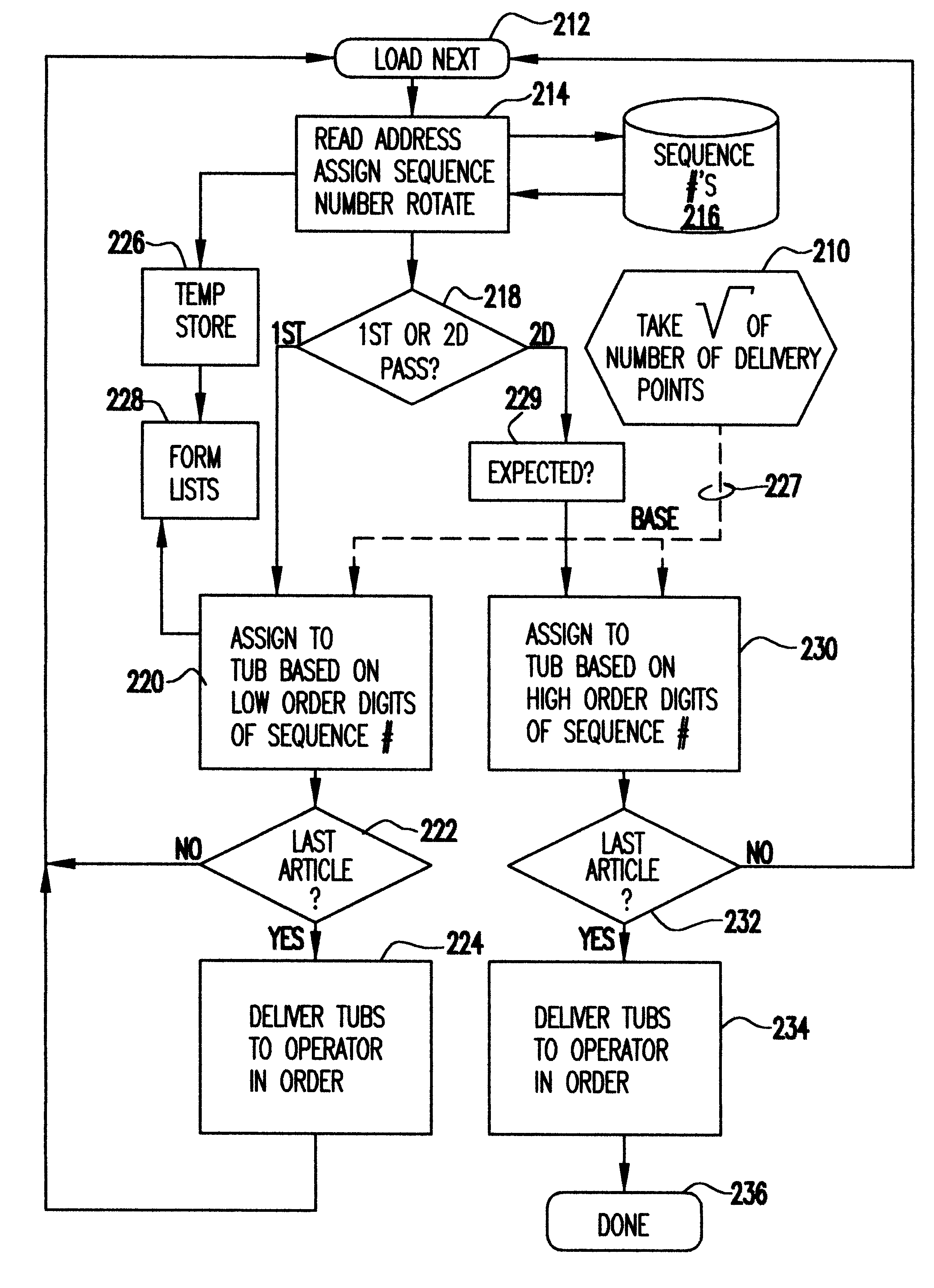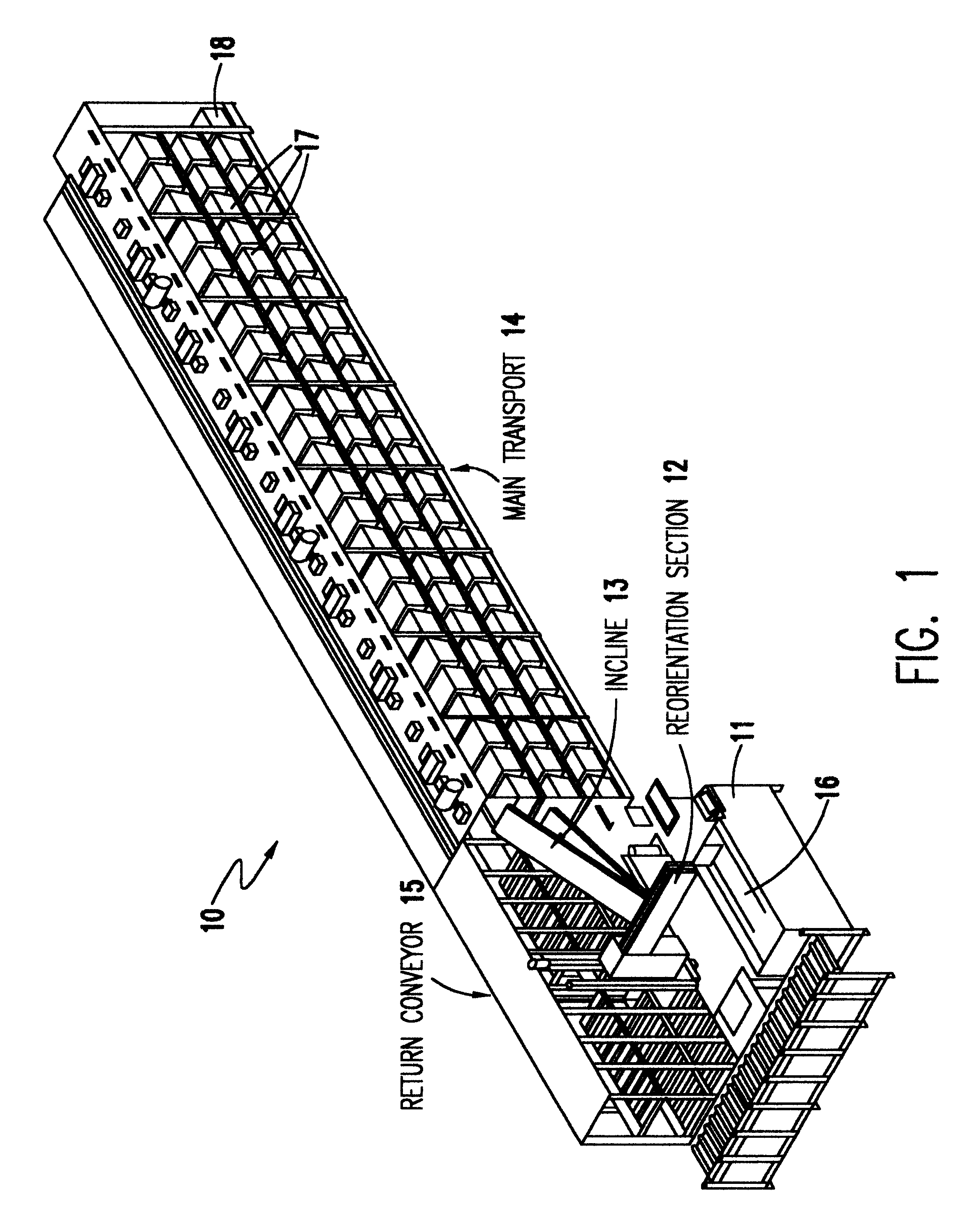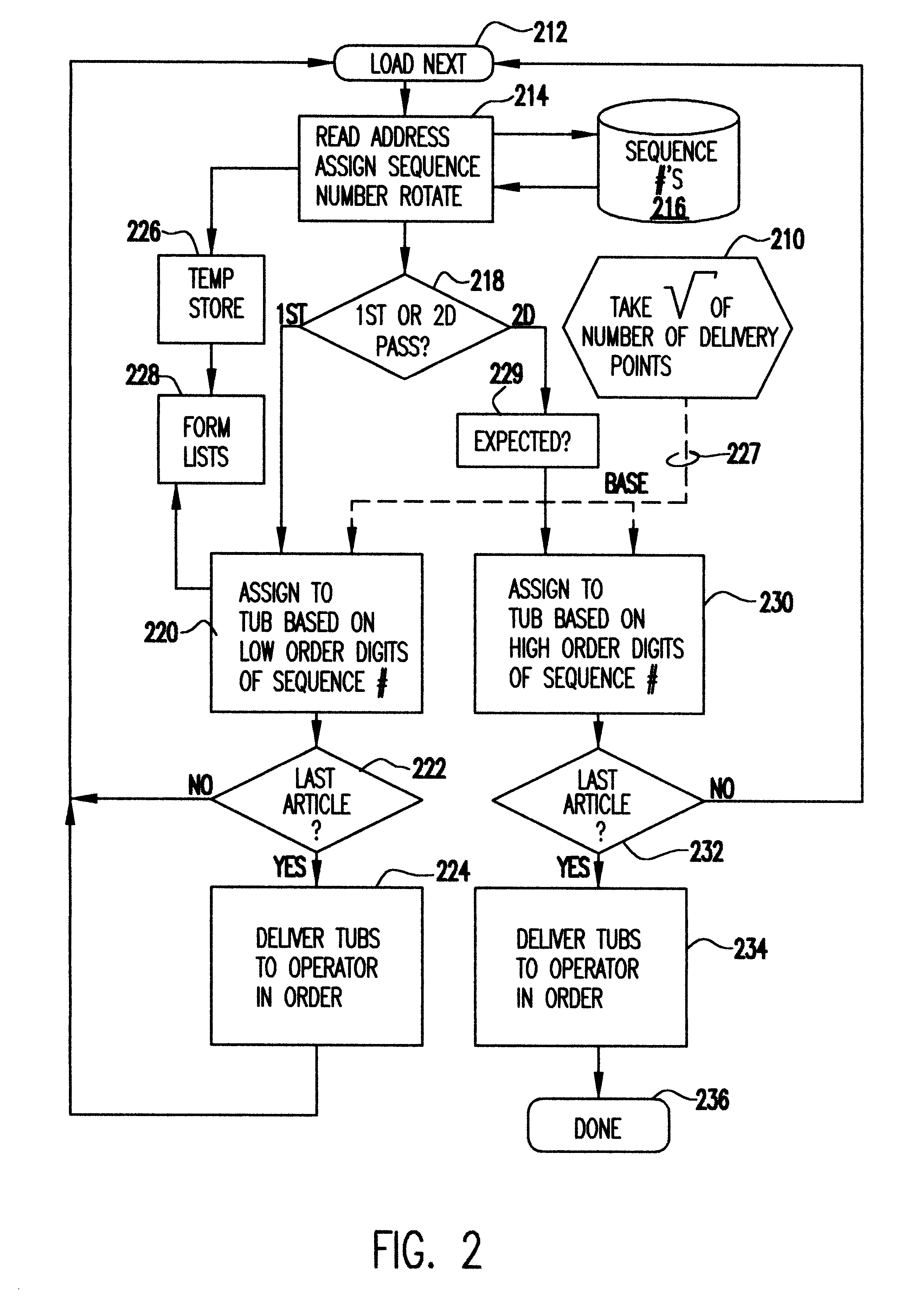For example, it is not possible to read addresses and manually sort all articles which may be deposited with a delivery service.
The problem of handling large volumes of articles is more aggravated and less tractable at the level of carrier delivery routes.
Carriers must
traverse their assigned routes in the shortest possible time and the time available is not sufficient for verifying the address provided for each article in accordance with each of a large plurality of delivery points.
Further, the orientation of the articles in relation to the addresses placed thereon is an additional source of inconvenience to the carrier and errors in delivery.
However, at the present time, only a
single level of sorting is generally available in currently used processes and is only practical at major collection centers and distribution points.
Moreover, no automated facility is presently available which has the potential for improving accuracy and speed of delivery at the local carrier
route level.
Many delivery errors and many instances of inefficiency are occasioned by errors in the order in which articles or groups of articles are placed which requires additional perusal of the intended delivery address numerous times in the course of a correct delivery or the failure of a carrier to find all articles to be delivered to a given address at the time the carrier reaches that address.
Further, no known
system presents the articles in a given orientation using standard (e.g. USPS) flats tubs with regard to an address affixed thereto as well as in order of delivery point at any level of the delivery process.
Accordingly, the likelihood of sorting and / or delivery errors as well as handling time is increased.
In regard to the United States
Postal Service (USPS) at the present time, a further problem is presented which may be shared by other delivery services in the near future.
First, the tubs have a length and width that exceed the dimensions of the largest"flats" (e.g. large envelopes which exceed normal"letter" dimensions, generally between 6.times.9 inches and 12.times.18 inches) so that a flat cannot become wedged between all four sides of the tub from which it would be difficult to extract but can become displaced between a stack of flats and a side of the tub which both violates ordering of the flats and presents difficulty in retrieval from the tub. The permitted variability of the dimensions of flats relative to the dimensions of a USPS tub also allows smaller flats to be accommodated side-by-side which is, by definition, out of order.
Second, flats will not only have different dimensions but may be of greatly varying thicknesses and weights. Therefore, each flat will have different aerodynamic characteristics when it is placed in the tub. That is, when a flat is released from a mechanical sorting
machine at some finite horizontal velocity, it will "fly" or tumble unpredictably and orientation of the flat in the tub cannot be assured. The dimensions of the tubs and the random and increasing height of a stack of flats which may be placed in the tub (as well as their possible
fragility) do not permit the
insertion of any mechanism into the tubs which would be effective to restrain such random tumbling effects.
However, such tubs were not optimally suited to transportation of articles by the operator of the mechanical sorting
machine for the
multiple pass sorting processes which have been required.
(U.S. Pat. No. 5,009,321 is exemplary of such sorting processes in which a
first pass uses
optical character recognition to apply a bar code to the article which is used in subsequent sorting passes but generally undesirable since it alters the appearance of the article and is considered defacement of the article.
Each pass with its corresponding insertions of flats into tubs while possibly providing for rotation of flats into a desired orientation, can result in flats being later reoriented into different, undesired, orientations.)
This further transfer can also be a source of errors in ordering and / or orientation since the flats can shift horizontally against each other in an uncontrollable fashion during such transfer.
Further, no mechanical sorting apparatus has been developed which can accommodate use of USPS standard tubs to directly receive sorted articles without compromising the ordering and / or facing (e.g. face-up and desired address orientation) of articles.
 Login to View More
Login to View More  Login to View More
Login to View More 


